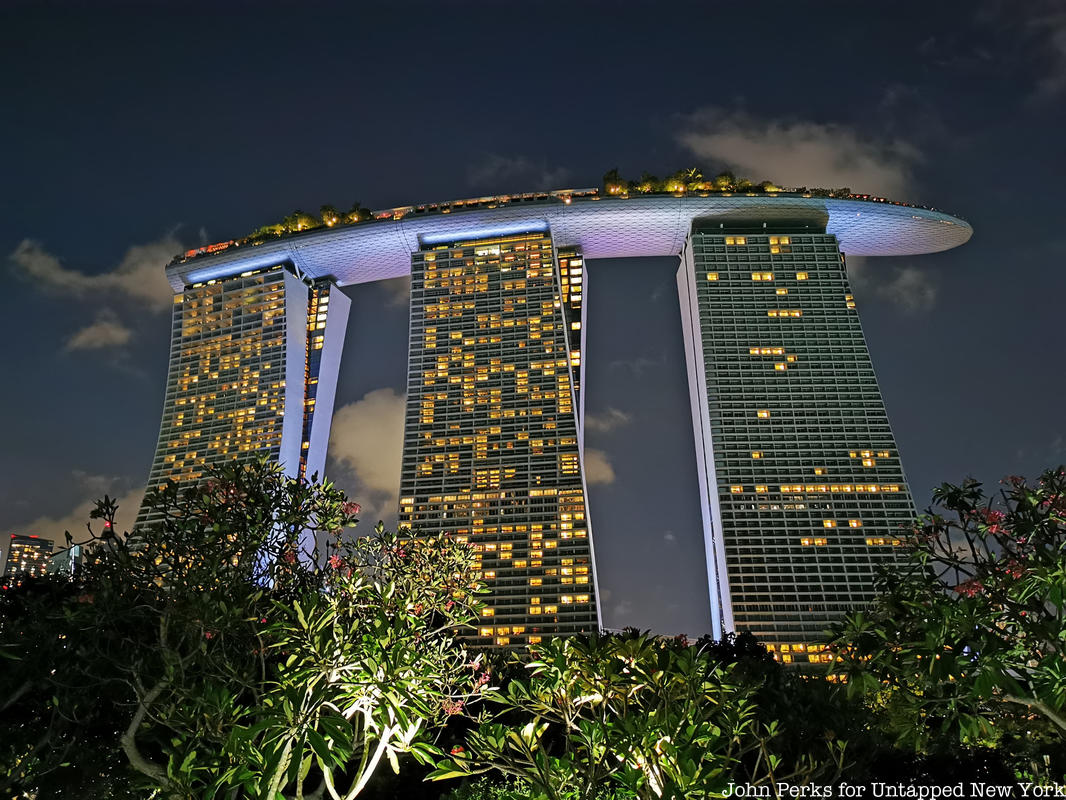Ken Teo, director in a boutique design firm in Singapore, gives his take on his top five interesting buildings in this tiny Republic where he treasures the historical, iconic and unique facades that define Singapore.
1. Golden Mile – Ghetto Blaster
Singapore was an amazing place in the 70s for architects to experiment with European urban planning solutions for higher density living. Designed by Design Partnership and completed in 1973, Golden Mile complex expresses the raked section and “Streets in the Sky” concept by the Smithsons. The structure is a small fragment of a longer linear block that was supposed to trace the coast line, but never got realised.
Heroic architecture with a focus on rehousing horizontal communities vertically; we are very unlikely to see a building of this type constructed again anywhere in the world. Nostalgia for a brutalist past means that there is now a growing demand amongst edgy urban, creative types to live there. A similar situation to the Brunswick Centre and the Barbican in London.
Today, Golden Mile is a unique site in Singapore for various reasons. Explore the upper levels to discover hidden spaces for residents to socialize. Although their complex is showing its age from the outside, many residents are renovating their units to have modern living in this older complex. If you visit the ground floors, you will see a constant flow of busses as Golden Mile is a primary drop off point for busses traveling between Singapore and Malaysia. Golden Mile has also become a Thai centre. All things Thai can be found from grocery stores and food stalls to discos and karaoke.
2. Pearl Bank Apartments – Another Cool Effort from a Local Boy
Another architectural landmark in Singapore, this and the Peoples’ Park complex just down the road, was another early study in high rise, high-density living. Finished in 1976 and rising 113 metres, it was the tallest and densest residential building in Singapore at that time. The key design move is the horseshoe plan of the tower that opens towards the afternoon sun, significantly reducing the facade area exposed to direct sunlight. It sits imposingly on top of Pearl’s Hill and looks very cool lit at night.
Pearl Bank Apartments has become a site of controversy and rumor. While some view the sight as a modern day eyesore, there are others that are fighting for the building to be granted conservation status by the government to pay homage to its history. More recently, it is looking likely that residents will opt to “en-bloc” the unit, which in Singapore means to sell the site to real estate development to demolish and redevelop the land.
3. Marina Bay Sands – Respect not Love
You don’t have to love it for the way it looks, but you can respect it for the shift of scale that it presents to the local built landscape. An analogical Mt Ararat, the complex was designed by Moshe Safdie as 3 monoliths complete with a stranded ark on top. With a scale ruler taken from the strip in Las Vegas, Singapore’s busiest hotel and casino cannot be denied in anyway because of sheer size. Nothing in Singapore so far feels as “Big” as Marina Bay Sands. This is Singapore in 2011. The grandeur is part Vegas and part Dubai.
4. The Colonnade – Stack of Boxes
This highly intricate, conceptually modular structure with complex floor plates that yield unique double volume spaces internally was designed by Paul Rudolph and completed in 1987. Of particular interest is the raised lobby area that creates an airy arrival and benefits the views of the lowest floor apartments.
Twenty years after it was completed, the Colonnade “high waisted” look is becoming more and more common by developers and Singapore’s Housing Development Board. It can be crossed referenced to the metabolist movement in Japan of the 1960s but Paul Rudolph had his own way of interpreting it.
5. St Mary of the Angels Church – Reassures You that God is a Tasteful Modernist and likes White
The work of Singapore architects WOHA is a secluded Catholic Church perched on a hill top in the middle of a public housing estate. Modernist and intimate in scale, this is a rather special find. I believe this is definitely worth a visit to west Singapore, where the overall feel is more verdant. The original church was built in the 1950, but it eventually suffered from overcrowding, parking problems and an urgent need for major structural repairs in both the church building and the friary. It was redeveloped and completed in 2003.






